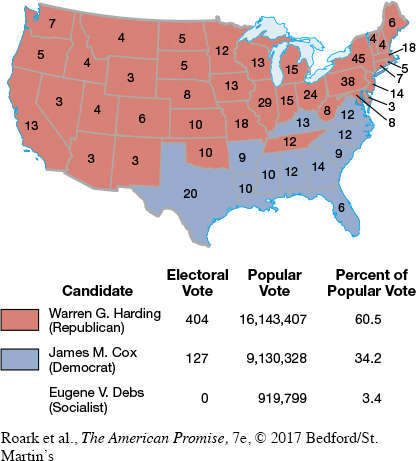The American Promise: Printed Page 646
The American Promise, Value Edition: Printed Page 588
The American Promise: A Concise History: Printed Page 671
Postwar Politics and the Election of 1920

A thousand miles away in Washington, D.C., President Woodrow Wilson, bedridden and paralyzed, ignored the mountain of domestic troubles—
Harding found the winning formula when he declared that “America’s present need is not heroics, but healing; not nostrums [questionable remedies] but normalcy.” But what was “normalcy”? Harding explained: “By ‘normalcy’ I don’t mean the old order but a regular steady order of things. I mean normal procedure, the natural way, without excess.” Eager to put wartime crusades and postwar strife behind them, voters responded by giving Harding the largest presidential victory ever: 60.5 percent of the popular vote and 404 out of 531 electoral votes (Map 22.6). Harding’s election lifted the national pall, signaling a new, more easygoing era.
REVIEW How did the Red scare contribute to the erosion of civil liberties after the war?